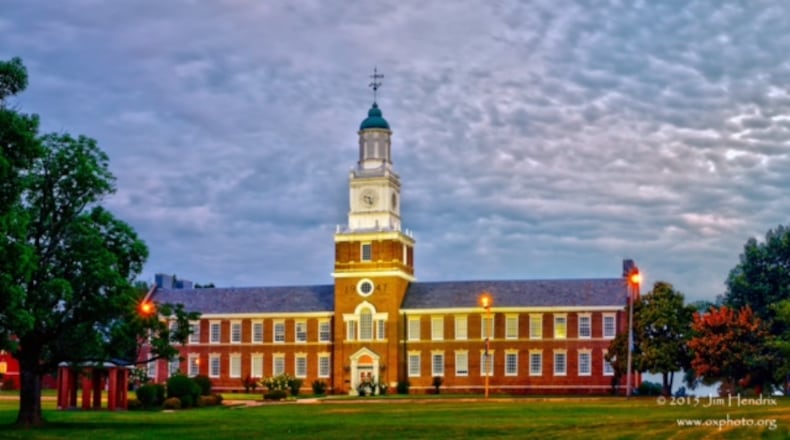Rust College Timeline:
1866 Shaw School established in Asbury Methodist Episcopal Church with Dr. A.C. McDonald as the first President.
1867 Erection of the first building (McDonald Hall) on the present campus.
1868 Institution chartered as Shaw University by the State of Mississippi.
1870 The State of Mississippi authorized Shaw College to award degrees May 26.
1878 First two college graduates were Robert Q. Adams and Wesley Thomas.
1892 The name of the institution was changed from Shaw University to Rust University.
1914 The institution placed under the auspices of the Board of Education of the Methodist Episcopal Church.
1915 The name of the institution changed from Rust University to Rust College.
1920 Dr. M.S. Davage became the first African-American President of the institution.
1924 Dr. L. M. McCoy, an alumnus, became Rust's eighth president and served with distinction for 33 years (1924-1957).
1930 Ms. Natalie Doxey started the Rust College A 'Cappella Choir. The Elementary School discontinued.
1940 A major disaster (Rust Hall burned). This five-story building housed administrative offices, the library, dormitories for men and women, dining hall, music department, auditorium, classrooms for college courses, and gymnasium.
1953 The high school department discontinued.
1957 President Dr. Earnest A. Smith, an alumnus, became the 9th president (1957-1967).
1960 Erection of President's Shrine representing nine (9) college presidents.
1965 Completion of Wiff Dormitory, Gross Dormitory and McDonald Science Hall. Football at Rust discontinued. The G. I. Dormitory for male students was torn down to build the Science Building.
1966 Institute for Community Services (ICS) Head start established.
1967 Dr. W.A. McMillan became the tenth president. Served from 1967-1993.
1970 The Leontyne Price Library completed.
1970 Completed Davage-Smith dormitory, which houses 170 male students and E.L. Rust Hall which houses 196 female students.
1970 Rust College accredited by the Southern Association of Colleges and Schools.
1971 New Physical Education Building completed (W. A. McMillan Center).
1974 Modular scheduling program instituted. Doxey Fine Arts Building completed.
1974 Rust College accreditation reaffirmed by the Southern Association of Colleges and Schools.
1981 R.A. and Ruth M. Brown Mass Communication Center housing WURC radio and RC-TV2 television station completed.
1984 Rust College Accreditation reaffirmed by the Southern Association of Colleges and Schools.
1987 WURC, a non-commercial radio station, established on campus.
1991 Emma Elzy Residence Hall completed.
1992 Erection of Post Office/Student Washerette. Ervin ''Magic'' Johnson Sports Arena completed.
1993 ''A New Era: In Quest of Excellence'' began with the eleventh President, Dr. David L. Beckley.
1994 Rust College accreditation reaffirmed by the Southern Association of Colleges and Schools.
1999 John Davis Plant Operations Building completed
2000 David L. Beckley Conference Service Center completed.
2001 James A. Elam Chapel completed.
2004 Rust College accreditation reaffirmed by the Southern Association of Colleges and Schools.
2008 Hamilton Science Center completed
2011 Rust College received Airliewood, an antebellum former slave plantation estate a few blocks from the campus. Built in 1858, Airliewood served as living quarters for General Ulysses Grant during the Civil War.
Rust College was established in 1866 by the Freedman's Aid Society of the Methodist Episcopal Church. Its founders were missionaries from the North who opened a school in Asbury Methodist Episcopal Church, accepting adults of all ages, as well as children, for instruction in elementary subjects. A year later the first building on the present campus was erected. In 1870, the school was chartered as Shaw University, honoring the Reverend S.O. Shaw, who made a gift of $10,000 to the new institution.
In 1892, the name was changed to Rust University to avoid confusion with another Shaw University.
The name was a tribute to Richard S. Rust of Cincinnati, Ohio, Secretary of the Freedman’s Aid Society. In 1915, the title was changed to the more realistic name, Rust College. As students progressed, high school and college courses were added to the curriculum, and in 1878 two students were graduated from the college department. As public schools for Negroes became more widespread the need for private schools decreased, and in 1930 the grade school was discontinued. The high school continued to function until 1953. A significant change in the administration of the institution took place in 1920 when Dr. M.S. Davage became president, the first Negro to hold that position. Dr. L. M. McCoy (1924), his successor, was the first alumnus to serve his Alma Mater as president. He was followed in 1957 by Dr. Earnest A. Smith, an alumnus, class of 1937. In 1967, Dr. William A. McMillan, a non-alumnus assumed the presidency. In 1993, Dr. David L. Beckley, an alumnus, class of 1967, became the eleventh president of Rust College. Among approximately 20,000 former students of Rust College, many completed only their elementary or secondary education. However, more than 10,000 have graduated from the college department. Among these alumni are bishops of the United Methodist Church and other Church denominations, public school teachers and administrators, college presidents, lawyers, physicians, businessmen, government leaders and ministers.




